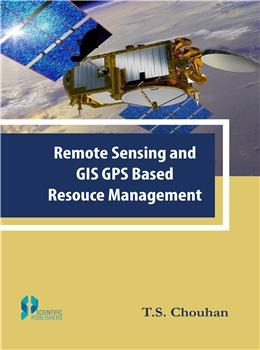Remote Sensing and GIS GPS Based Resource Management
Remote Sensing and GIS GPS Based Resource Management is backordered and will ship as soon as it is back in stock.
Couldn't load pickup availability
Genuine Products Guarantee
Genuine Products Guarantee
We guarantee 100% genuine products, and if proven otherwise, we will compensate you with 10 times the product's cost.
Delivery and Shipping
Delivery and Shipping
Products are generally ready for dispatch within 1 day and typically reach you in 3 to 5 days.
Book Details
-
Author: T.S. Chouhan
-
Publisher: Scientific Publishers
-
Language: English
-
Edition: 1st Edition, 2020
-
ISBN: 9789386102867
-
Binding: Hard Bound
-
Pages: 460
-
Size: 6.20 x 9.25 inches
-
Weight: 800 grams
-
Book Type: Reference Book
About the Book
This comprehensive book offers an in-depth exploration of Remote Sensing (RS), Geographic Information Systems (GIS), and Global Positioning System (GPS) as tools for monitoring and managing natural resources. These technologies are at the forefront of natural resource management and offer multi-temporal, multi-spectral, and multi-spatial resolutions, making them highly effective and efficient compared to traditional methods.
The book is aimed at exploring how Remote Sensing and GIS can be leveraged to observe and analyze the land, detect land use and land cover changes, and make informed decisions in resource management. Modern technological advancements have allowed for the integration of satellite remote sensing and GIS to provide valuable, cost-effective data for understanding the changing landscape. The book also explores the Global Positioning System (GPS), which contributes to the precision and reliability of the data collected.
Key Features:
-
Remote Sensing for Resource Monitoring: The book discusses how satellite remote sensing is a powerful tool for monitoring land use and land cover changes. It explores its ability to collect multi-spectral and multi-temporal data, which provides a clearer understanding of environmental changes over time.
-
Geographic Information Systems (GIS): The integration of GIS with remote sensing data allows for spatial data analysis and assists in land management, offering an efficient way to map and manage natural resources.
-
Global Positioning System (GPS): The book highlights the role of GPS in geospatial data collection and how it enhances the precision and reliability of the data, especially for resource management activities.
-
Cost-Effective and Efficient Monitoring: One of the primary advantages of RS, GIS, and GPS is their cost-effectiveness and ability to provide accurate information without the need for extensive on-the-ground surveys.
-
Landscape Visualizations for Decision-Making: The book emphasizes how these technologies can offer visual representations of the landscape, which are crucial for making timely and informed decisions in land resource management.





